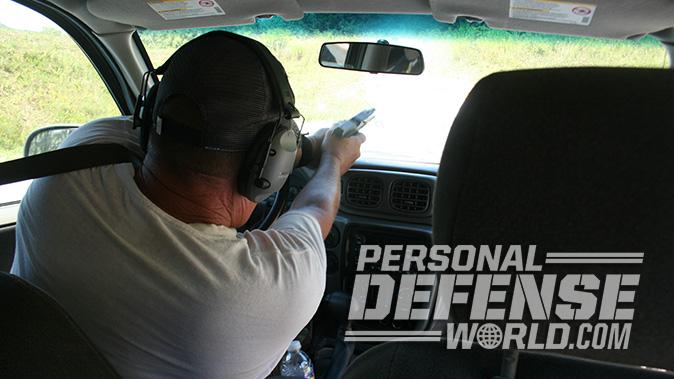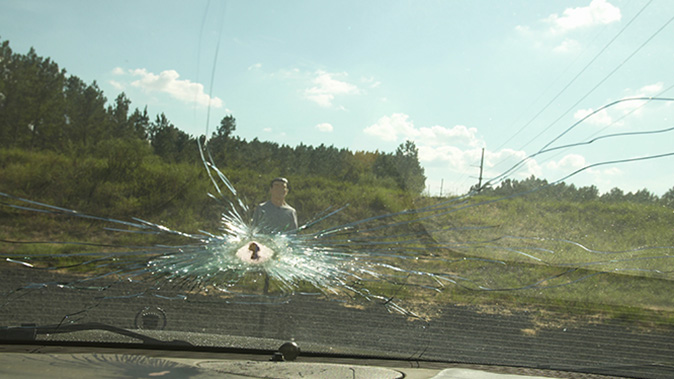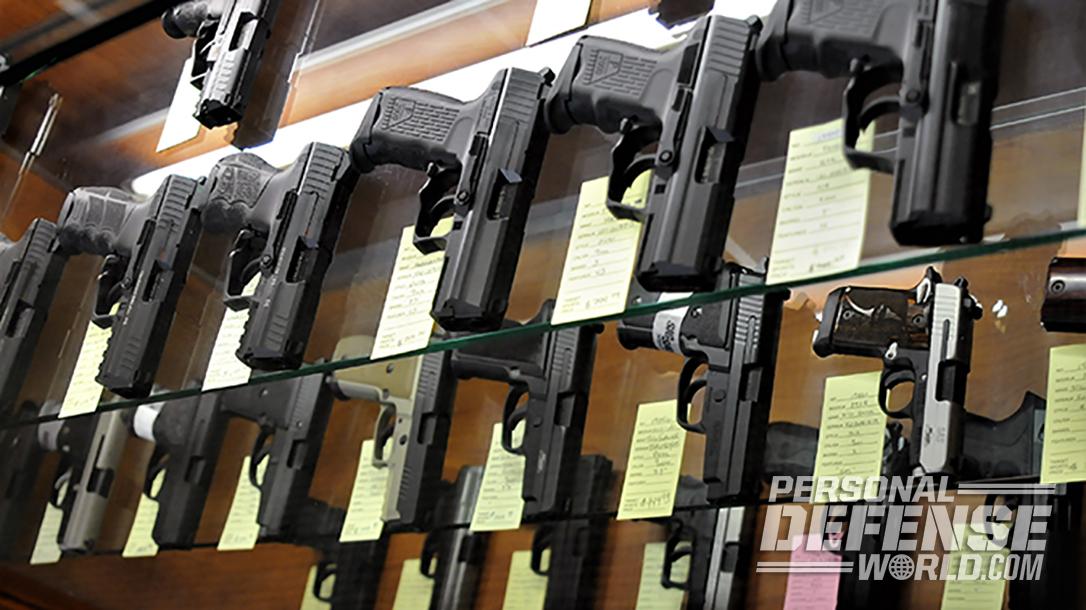Thank you for reading this post, don't forget to follow and signup for notifications!
I had the opportunity to attend a three-day Intensive Handgun Skills program presented by the International Association of Law Enforcement Firearms Instructors (IALEFI) which provides intense training and lessons on how to survive a carjacking. One full day was dedicated to vehicle defense, and this segment proved to be especially provocative. Although these lessons were geared toward law enforcement officers, much of this information would prove equally useful to responsible citizens concerned about their safety, especially learning how to survive a carjacking.
5 Tips for Surviving a Carjacking
Tip #1: Avoid Getting Carjacked in the First Place
While we can’t totally eliminate the possibility of coming under attack while in a motor vehicle, we can take measures to reduce it. Unlike law enforcement officers, responsible citizens do not have to put themselves in dangerous situations. Part of learning how to survive a carjacking is understanding that avoidance is the best strategy. When walking to your vehicle in a parking garage or lot, be especially wary of individuals shadowing your movements. Use extreme caution when traveling through high-crime areas, particularly at intersections. Try to keep an avenue of escape open at all times. Should some person or persons approach your vehicle, you can leave without a confrontation. If you can drive around or through a problem, so much the better. Keep your doors locked at all times and be ready to punch the accelerator if some sordid-looking individual approaches your car.
Tip #2: Try Your Best to Escape
As I mentioned earlier, escape remains the best course of action. But each situation is unique. You may be entering your car and confronted before you can get underway. Consider that your path may be blocked by another vehicle or obstacle. When confronted with an immediate and unavoidable risk of death or serious bodily injury, fighting it out may be your only recourse. I’m not suggesting that you drive into a dangerous intersection without checking, but running a red light is insignificant compared to your safety.
Tip #3: Learn How to Draw a Firearm from the Driver’s Seat

When drawing from a confined seated position, that inside-the-waistband holster you normally favor may prove a little clumsy and slow, particularly when restrained by a seatbelt. Professionals who spend a great deal of time on protective or surveillance details often utilize cross-draw holsters. This makes for a much more efficient draw from a seated position. A number of firms also market “car holsters” that enable you to secure a handgun off-body but within easy reach. Personally, I prefer to have the gun on my belt for any number of reasons.
Most of us perform the vast majority of our drawing and shooting practice in the more conventional positions, such as standing or kneeling. But how much time have we devoted to practice from a sitting position? We spend a good part of any given day with our posteriors anchored in a seat or chair, and this is an area that cannot be neglected. The ability to deliver accurate fire from a seated position remains a key element of vehicle defense. Consider that you’ll not only be working from a confined, seated position but there are all sorts of other impediments—such as a steering wheel, seatbelt, and center console—to gum up the works.
Before moving off to the vehicles, all of the trainees at the IALEFI course did a bit of work from a metal folding chair at a target positioned left, right, forward, and behind. Once our class moved from the chairs to inside the vehicles, all of the previous work came into focus. I’m a big believer in training as realistically as possible, and after having a go at it, the students came away with the confidence that they could engage and hit threats while seated in a motor vehicle. It really didn’t matter where the target was positioned—students found a way to hit it. You may have to shoot from an unconventional position or with your weak hand, but you can make it work.
Of course, most of us will not be able to do this sort of thing on our own. Shooting up personal vehicles is seldom an option. Although officers in my agency regularly practice shootings from and around vehicles, it has always been a “windows down” proposition. A partial solution might be getting an inert training gun as a companion to your carry piece. Drawing the training gun from your holster and simulating firing can all be safely done in your driveway or garage.
Tip# 4: Be Careful with Car Windows

If you have to fire from inside a vehicle, you will more than likely have to shoot through glass. Side windows and some rear windows are made of tempered glass. Upon impact of a bullet, the glass will instantly shatter. Windshields are made of laminated glass in the interest of safety. When struck with a bullet, laminated glass will crack or spider web, but it will not shatter. Be advised that laminated glass is a very formidable barrier that can cause jacket/core separation or cause a bullet to deviate from your point of aim. Bonded and all-copper hollow points tend to perform better through laminated glass.
Tip #5: Take Cover
A circumstance could arise where your vehicle is disabled or blocked and you are taking incoming fire from some distance away. Staying in the car is likely to result in certain death or serious bodily injury. If you can exit the vehicle from the opposite side of the incoming fire and move to cover, you’ll be in a much better position. Keep your head down and try to make yourself as small a target as possible.
Cover can be defined as anything that will afford protection from whatever is being fired at you. The best example I can give of true cover on most modern vehicles is the engine block and brake drums. The rest of our car is a combination of sheet metal, plastic, rubber, and glass. The good news is, even the best handgun rounds are “iffy” penetrators against vehicles. Rifle rounds and shotgun slugs will easily penetrate the windshield and doors of an automobile, but they also aren’t likely to be used by street thugs.
One interesting test that brought all of this to light was performed in the IALEFI class. Both the windshield and door of an intermediate-sized sedan were shot with four different loads commonly used for personal defense. They included two examples in 9mm, one with a non-bonded hollow point and another with a bonded hollow point, and two in .45 ACP, again with a non-bonded and bonded bullet.

All four rounds easily penetrated the windshield and struck a target placed on the seat. Results against the car door were most surprising. None of the rounds penetrated the open door! I’m not suggesting doors are bulletproof, but they may afford some protection as you move down the side to better cover. Car doors contain door cards, handles, switches, glass, and power locks, all of which can retard bullet penetration. On the other hand, if the bullet only strikes sheet metal, it’s coming through. Doors may not represent true cover, but if it’s your only choice for how to survive a carjacking in this scenario, they can buy you a couple of seconds until you can find something better.
Hopefully, these tips for how to survive a carjacking have opened your eyes to how you can save your life. Leaving the scene is always preferable to fighting it out, and going to your gun is never the first choice. But, in extreme circumstances, it may be your only recourse. Stay switched on, and be willing to do whatever it takes to stay safe.
The post How to Survive a Carjacking appeared first on Personal Defense World.




